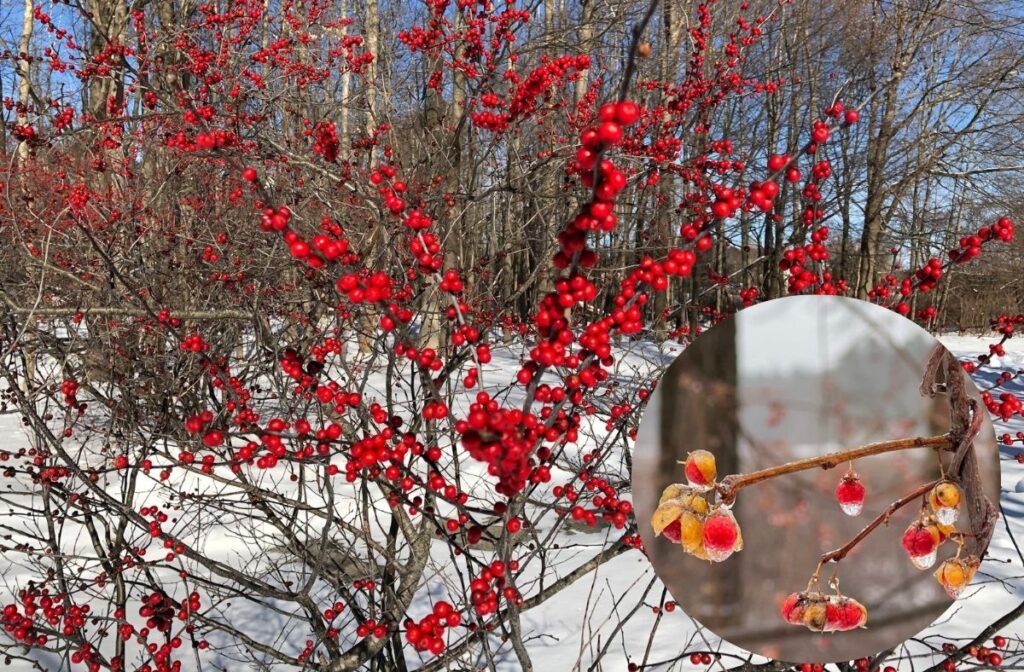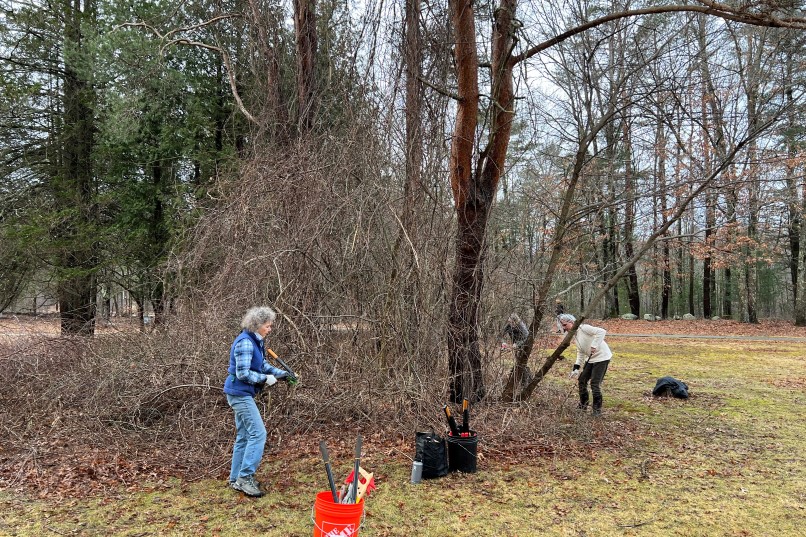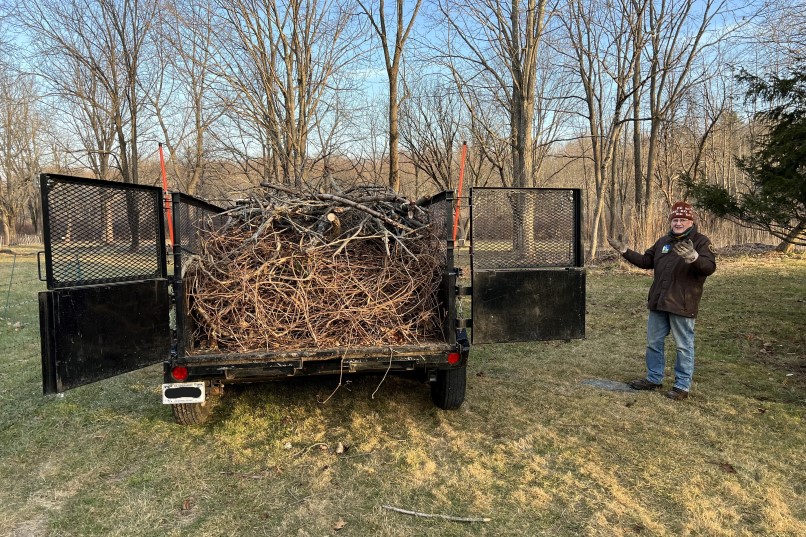
Written by Kiah Walker, Biologist at Minute Man National Historical Park
Winterberry (Ilex verticillata) and the invasive Asian bittersweet (Celastrus orbiculatus) grow throughout Minute Man National Historical Park. Birds such as American robins, eastern bluebirds, and cedar waxwings feast on the fruits of both species during the winter months, but winterberry is a much better source of energy. Other native species, like arrowwood viburnum (Viburnum dentatum) are even more nutritious, as they have the high-fat content necessary for birds to survive harsh winter conditions. To learn more about plants preferred by migrating songbirds, see this species list provided by the University of Rhode Island.
Fortunately, native shrubs “thrive when bittersweet is removed,” explains Margie Brown, Integrated Resources Program Manager. “Plants found in Minute Man National Historical Park that repopulate when bittersweet is removed include winterberry, arrowwood viburnum, highbush blueberry (Vaccinium corymbosum), black cherry (Prunus serotina), chokecherry (Prunus virginiana), elderberry (Sambucus canadensis), sweet pepperbush (Clethra alnifolia), and more.” When bittersweet is left unchecked, it usually overtakes and strangles native plants.
As such, staff and volunteers continue to battle bittersweet all winter long, weather permitting. If you are interested in joining us for our weekly stewardship days to help remove Asian bittersweet and other invasive species, please contact Kiah Walker at kiah_walker@nps.gov to volunteer!
To learn more about the definitions of “native,” “non-native,” and “invasive” species, click here.
Image above: Winterberry in snow, inset circle of Asian bittersweet.
Images below: Volunteers removing and hauling away invasive Asian bittersweet in the winter of 2022.

